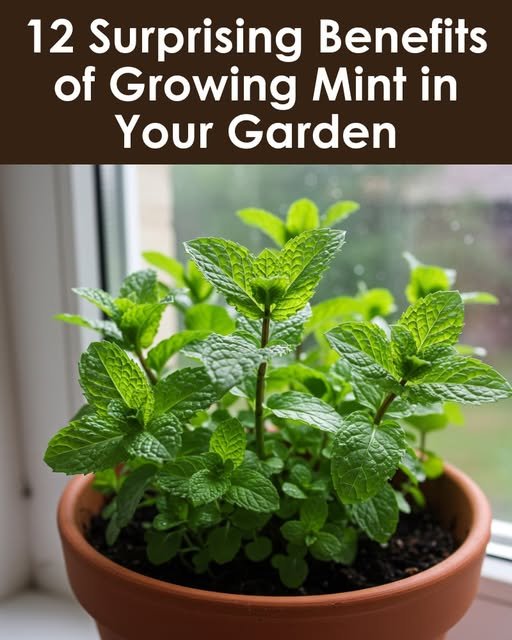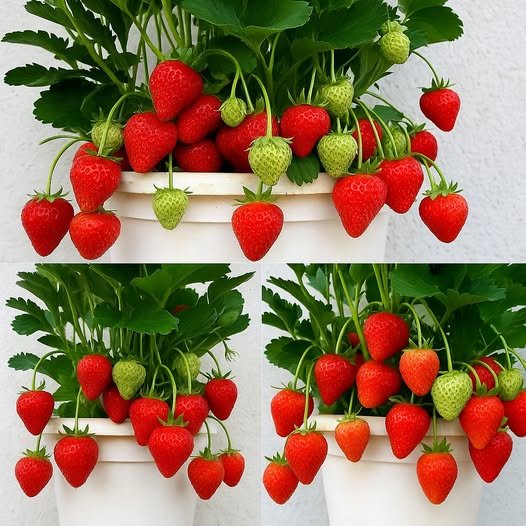Bell peppers are a staple in many kitchens, adding vibrant color, crunch, and flavor to a variety of dishes. Instead of purchasing them at the store, imagine having a continuous supply of fresh, organic bell peppers grown right at home! With the right approach, you can cultivate an abundant harvest without much effort, saving money while enjoying superior taste and nutrition.
This guide will walk you through the step-by-step process of growing bell peppers using a simple yet highly effective method that guarantees high yields.
Why Grow Bell Peppers at Home?
Growing bell peppers at home offers several advantages:
- Cost Savings: Store-bought bell peppers can be expensive, especially organic ones. Growing your own means unlimited supply at no extra cost.
- Healthier and Fresher: Homegrown bell peppers are free from harmful chemicals and pesticides, making them safer to consume.
- Year-Round Harvesting: With the right techniques, you can cultivate bell peppers all year, even indoors.
- Perfect for Small Spaces: Bell peppers grow well in containers, raised beds, or vertical gardens, making them ideal for urban gardeners.
Now, let’s dive into the best method to ensure a thriving bell pepper harvest!
Step 1: Choosing the Right Bell Pepper Variety
Bell peppers come in various colors and sizes, each with unique flavors and growing requirements. Some of the best varieties for home gardening include:
- California Wonder: A classic, sweet bell pepper variety with thick walls.
- Yolo Wonder: Known for high yields and resistance to diseases.
- Mini Bell Peppers: Great for container gardening and quick harvesting.
- Purple Beauty & Chocolate Beauty: Unique, colorful varieties that add a special touch to your garden.
Choose a variety based on your climate, space availability, and culinary preference.
Step 2: Planting Bell Peppers the Right Way
1. Starting from Seeds or Seedlings
- Seeds: If growing from seeds, start them indoors 8-10 weeks before the last frost date.
- Seedlings: For faster results, purchase healthy seedlings from a nursery and transplant them once temperatures are warm.
2. Choosing the Best Location
Bell peppers require:
- At least 6–8 hours of direct sunlight daily.
- Warm temperatures (70–85°F / 21–29°C) for optimal growth.
- Protection from strong winds that could damage delicate stems.
3. Soil Preparation
- Use loamy, well-draining soil rich in organic matter.
- The ideal pH is 6.0–6.8.
- Enrich the soil with compost or aged manure for added nutrients.
Step 3: The Secret Method for a Bumper Harvest
The key to growing overflowing bell pepper plants lies in pruning, staking, and deep watering techniques.
1. Pruning for High Yields
- Once the plant reaches 12 inches tall, pinch off the top two sets of leaves to encourage bushier growth.
- Remove early flowers to redirect energy into root and leaf development.
2. Staking for Support
- Use wooden stakes or tomato cages to keep plants upright.
- This prevents branches from breaking under the weight of multiple peppers.
3. Deep Watering & Mulching
- Water deeply 2-3 times per week, keeping the soil moist but not soggy.
- Apply mulch around plants to retain moisture and suppress weeds.
Step 4: Fertilizing for Maximum Production
- Use a balanced fertilizer (10-10-10) every 3 weeks.
- Epsom salt (magnesium sulfate) boosts flower production and fruit set.
- Banana peels and eggshells provide potassium and calcium, strengthening plant structure.
Step 5: Pollination & Pest Prevention
- Hand pollinate indoor plants using a soft brush or by gently shaking flowers.
- Keep pests away naturally with companion planting (e.g., basil, marigolds, and onions deter aphids and whiteflies).
- Check leaves regularly for pests and use neem oil or insecticidal soap if needed.
Step 6: Harvesting Bell Peppers for Continuous Production
- Pick peppers when they are fully colored but still firm.
- Frequent harvesting stimulates more fruit production.
- Use sharp scissors to avoid damaging the plant when picking peppers.
Step 7: Extending Your Growing Season
To grow bell peppers all year long:
- Move potted peppers indoors before cold temperatures set in.
- Use grow lights if sunlight is insufficient.
- Protect outdoor plants with row covers or plastic tunnels in cooler months.
Final Tips for a Thriving Bell Pepper Garden
Rotate crops yearly to prevent soil depletion.
Avoid overcrowding – allow 12–18 inches between plants.
Save seeds from your best peppers to plant next season.
Use organic compost regularly to enrich soil naturally.
Conclusion
With this proven method, you can enjoy an abundant, overflowing harvest of bell peppers without ever needing to buy them again. By following the steps outlined—choosing the right variety, providing proper care, and using smart gardening techniques—you’ll have fresh, homegrown bell peppers year-round.
Start your bell pepper garden today and enjoy the benefits of homegrown, organic, and delicious peppers!



